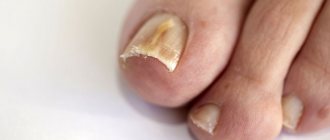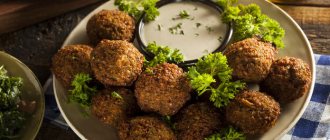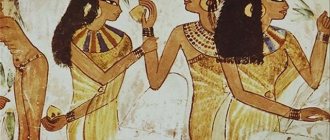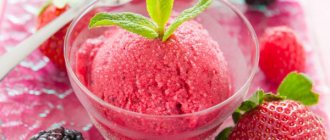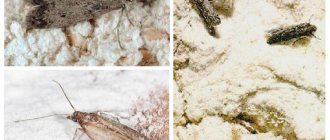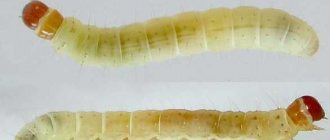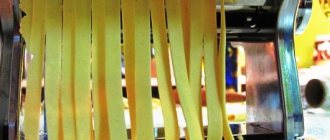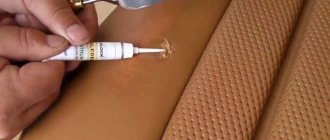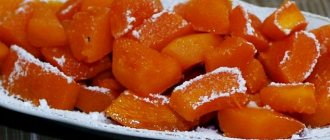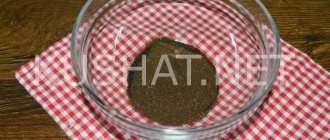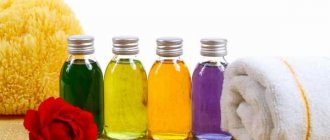Modern detergents have pushed laundry soap into the background. Despite this, it remains one of the economical cleaning products. It is used not only for washing, but also for cleaning plumbing fixtures. It is important to know what laundry soap is made from. The raw materials are vegetable oils and fats. Soap is a natural product because no synthetic substances, flavors or fragrances are added to it.
Some people have a false idea of what laundry soap is made from: dogs. If we ignore the moral side and look at it only from the technical side, with a minimum amount of fat the process becomes unprofitable, and its composition is in no way suitable for soap making.
What was laundry soap made from in the USSR? For this purpose, sodium salt and waste fatty acids were used. You could find a piece of this universal detergent in every home.
Benefits of laundry soap
- Efficiency.
- An environmentally friendly product made from natural fatty acids and alkali.
- An ideal hygiene product.
- Hypoallergenic product.
Soap can be used to remove oil paint, fuel oil, and old stains. The product has excellent antimicrobial and disinfectant properties. The environmental friendliness of the soap allows you to wash food, treat combs and toothbrushes.
It is indispensable in home use. Soap foam cleanses fabric well of organic compounds. This detergent is used for cleaning children's clothes and washing dishes. It removes fatty deposits well.
As a home remedy against diseases, laundry soap is used to prevent colds. It is recommended to treat acne and other growths on the skin with a soap composition, use it to treat suppuration and fungal diseases, and also treat areas of sun and chemical burns. In addition to eliminating excess oily skin, soap removes dandruff well.
It must be remembered that soap contains a slight excess of alkali, which can wash away not only excess, but also necessary fat. To avoid harm to the body, proper application and dosage is necessary when using soap.
Original composition
The composition of laundry soap is not kept secret. Many components are used as raw materials:
- Vegetable oils: palm, sunflower and palm kernel.
- Fats of animal origin: lamb, beef and pork.
- Salomas.
- Fatty acids: oleic, stearic and palmitic.
- Fatty acids of synthetic origin.
- Soap stocks are substances obtained by purifying fats and oils with an alkaline solution.
The proportions of the components may vary . The production process directly depends on this. But, regardless of what laundry soap is made from, its composition must meet the requirements of GOST 30266−95, which was established back in Soviet times.
Even if you know all the ingredients, it is unlikely that you will be able to make soap at home. It must be cooked under certain temperature conditions.
Soap composition
What laundry soap is made from depends on many factors. The basis is fats, oils, fatty acids and fat-containing production wastes, which are saponified with sodium or potassium alkali.
The following components are used as raw materials.
- Vegetable oils: palm, palm kernel, sunflower.
- Animal fats: beef, pork, lamb or mixtures thereof.
- Salomas. The production process involves saturating the oil with hydrogen atoms at a temperature of 200-3000C in the presence of nickel or platinum catalysts. In this case, fats become solid due to the addition of hydrogen atoms to unsaturated fatty acids at the double bonds.
- Fatty acids: oleic (unsaturated), stearic and palmitic (saturated). They are isolated from fats, which contain them in different proportions.
- Synthetic fatty acids – FFA. It is produced by blowing air through paraffin heated to 105-1200C, with the addition of manganese compounds as a catalyst. Mixtures of saturated monocarboxylic acids with impurities are obtained from petrochemical raw materials. The production of FLC at domestic enterprises has been closed since 2001 due to the unprofitability of technologies, low quality products and large amounts of toxic wastewater.
- Products for purifying fats and oils with alkali solutions - soap stocks. With their low quality, the soap has an unpleasant odor and is dark in color.
What laundry soap is made from and its composition determines the technology of the process. It is necessary to have an understanding of the properties of the main product. In any case, it must comply with the requirements of GOST 30266-95.
What is “Soviet” soap?
As mentioned earlier, there are several technologies for making laundry soap. If we are talking about a standard bar of soap, which we have known since Soviet times, then you are probably interested in guest number 30266 95.
The composition of laundry soap according to GOST has not been changed for several decades. This is the most common option for making soap. It is distinguished by strict technologies during soap making, and each component must be of excellent quality.
So, the composition of laundry soap 72 is sodium salt and fatty acids. No bleaches, fragrances or preservatives.
The number 72 indicates the final percentage of fatty acids in the finished product. During the manufacturing process, such soap is boiled for several hours.
Interesting! The source of high-quality vegetable fats is the so-called salomas. It is used to produce butter, margarine, and spread.
Fats and their properties
Fats are esters of glycerol and higher carboxylic acids. They come in plant and animal origin. The former are a liquid substance, with the exception of palm and coconut oils. Most of them are dominated by unsaturated acids based on ethylene bonds. Any natural fats are complex mixtures of glycerides. Animal fat is a solid substance (lard) containing mostly saturated acids without double bonds.
Properties of fats:
- density – 0.9-0.98 g/cm3;
- insolubility in water;
- form aqueous emulsions with alkali and protein;
- differ in melting temperature;
- decomposition when heated;
- colorless, tasteless and odorless with no impurities.
Saponification of fats
In technology, fats are saponified in boilers by heating with alkalis or sulfuric acid.
To speed up processes, superheated steam and catalysts are used. Of the latter, the most common is a mixture of sulfonic acids, which form emulsions from fats, increasing the surface of their contact with the saponifying solution.
When fats are decomposed by sodium or potassium alkali, their salts (soaps) and glycerin are formed. The amount of reagent required for complete saponification of the oil is determined through the saponification coefficient according to the tables.
Example
Determine the amount of alkali required to saponify 1000 g of pork fat.
The weight of the oil should be multiplied by the saponification factor: 1000 g × 0.141 = 141 g.
In industry, alkali is used in the form of a 40% solution. For the saponification reaction, the amount of sodium alkali solution required is: 141/0.4 = 352.5 g. If potassium alkali is used, then it will require 1000 g × 0.198/0.4 = 495 g.
Laundry soap is made from waste vegetable or animal oils, the saponification number of which can be within a certain range. When producing soap, the free alkali content in the product is first analyzed, and then the required amount of the missing component is added, and the reaction is completed.
The degree of unsaturation of fats is characterized by the iodine number: the lower it is, the harder the soap is (value below 55) and the longer it is stored.
Using laundry soap
This detergent has been actively used in solid and liquid form since the times of the USSR. When used correctly, the product will bring great benefits. It is worth noting that the natural composition is suitable for children and women during pregnancy. Skilled housewives can treat many diseases with the help of this remedy, use soap against insect bites, and against pests in the country. Reviews confirm the effectiveness of this inexpensive product.
In folk medicine
The antiseptic, regenerating, antifungal and wound healing effects of the product made it an excellent option for home treatment. Knowing how to make a soap solution from laundry soap, ointment or compress, you can cope with a variety of problems:
- Douching with a soap solution helps well against thrush.
- The product can be used as a suppository for constipation.
- For hemorrhoids, you can gently treat the nodules with soap and water to relieve pain and inflammation.
- For skin damage, a weak solution helps speed up the healing process.
- For nail fungus, it is recommended to take baths with soap shavings.
- For abscesses and blisters after burns, you can treat the damaged area with a soap solution.
- For a runny nose and sinusitis, you can lubricate the nasal cavity with a weak solution of soap to prevent the growth of bacteria and the spread of infection.
- This remedy is effective against influenza due to its antiseptic properties.
- For bedsores, it is recommended to treat patients' skin with cotton swabs soaked in soapy water.
In cosmetology
Since laundry soap consists of natural ingredients, it is widely used in cosmetology. For example, this product is suitable for solving the following problems:
- A prepared paste of water and soap shavings helps get rid of dandruff.
- Washing your hair with laundry soap helps normalize the functioning of the sebaceous glands.
- Washing with soap is an effective way to eliminate acne.
- Baths with a weak warm solution of household soap shavings help get rid of cracked heels.
- Outdated models of down jackets that are not worth buying
- What is mulch and why is it needed in the garden?
- Pension savings of citizens in non-state pension funds have decreased
At home
Using this product for household needs helps to cope with any contaminants, even oil paint and fuel oil. The use of soap for washing is especially important, because with its help any stains on clothes disappear, despite the fact that the composition does not cause allergies and is absolutely harmless. In addition, the soap solution can be used to combat garden pests: you need to spray trees with it or treat plant leaves.
Saponification of fatty acids
A suitable substance is selected for the raw material from which laundry soap is made to carry out the reaction. Unlike fats, fatty acids are easily saponified by soda ash and potassium carbonate when cooked in an open kettle. It should be taken into account that the product contains up to 7% undigested fat. In this regard, at the end of cooking, a little alkali is added to saponify it.
If we ask the question of what laundry soap is made from now, then in industrial conditions it is easiest to use fatty acids. The process is less energy-consuming, and instead of expensive alkali, soda ash can be used.
The process of making soap from fatty acids is 2 times faster. They are introduced in small portions into a solution of soda ash to prevent the release of foam formed by the released carbon dioxide.
If the raw material is of sufficiently high quality, it is saponified directly in a boiler, bringing the amount of saponified product to 40-47%. The soap is then cooled and cut into pieces.
Low-grade fatty acids are salted out during the cooking process, separating the soap core. At the same time, it is purified and a high-quality product with a higher concentration is obtained.
A bar of soap is imprinted with a fatty acid content of 64 to 72%. Many people are interested in what laundry soap 72 is made from, which lasts longer and has high cleaning properties.
The technology for its production is no different from others, only salting out is done at least 2 times to obtain a sufficiently high concentration of saponified fatty acids.
What do the numbers mean?
The numbers 65, 70 or 72 are indicated on the packaging or on the bar of soap itself. The indication of the category indicates the content of fatty acids. The greater the amount of acids, the better the soap will perform the task.
72%
The best characteristics are found in 72% soap made from animal fats. Without additives, good foaming and high cleaning properties are observed.
70%
Products with the 70% mark differ slightly from the 72% category. It is possible to notice the difference only by weaker foaming.
65%
65% soap often contains rosin. This category is considered low-grade and foams and washes worse.
What is the difference between light and dark
Depending on the exact composition, the finished product acquires a light or dark color. There are also white options with a whitening effect. The main difference you need to be aware of when using it is that the light variety is not suitable for washing dishes.
By shape
Modern manufacturers produce laundry soap in several forms. Each option has its own purpose.
Lumpy
Bar soap is convenient for cleaning various surfaces and rubbing clothes when washing. Also, the lump version is convenient for everyday hand washing.
Liquid
In terms of properties and composition, the liquid version is an alternative to the lump version. Liquid soap is sold in standard plastic containers.
Powdery
Powdered soap can be added to the washing machine or dissolved in a basin and washed clothes by hand. To prevent a strong smell from remaining after washing, it is better to combine the product with conditioner.
Ointment
The presence of a large amount of liquid vegetable fats gives the finished product a paste-like shape. The ointment is convenient to use for treating contaminated, hard-to-reach places.
